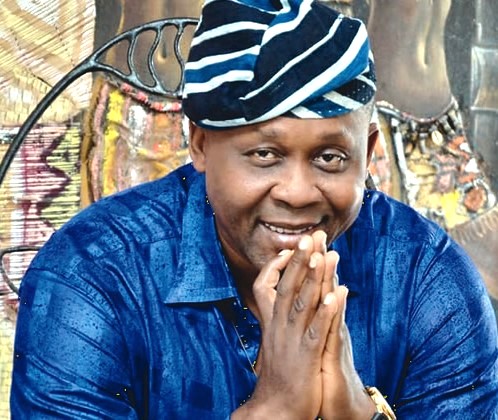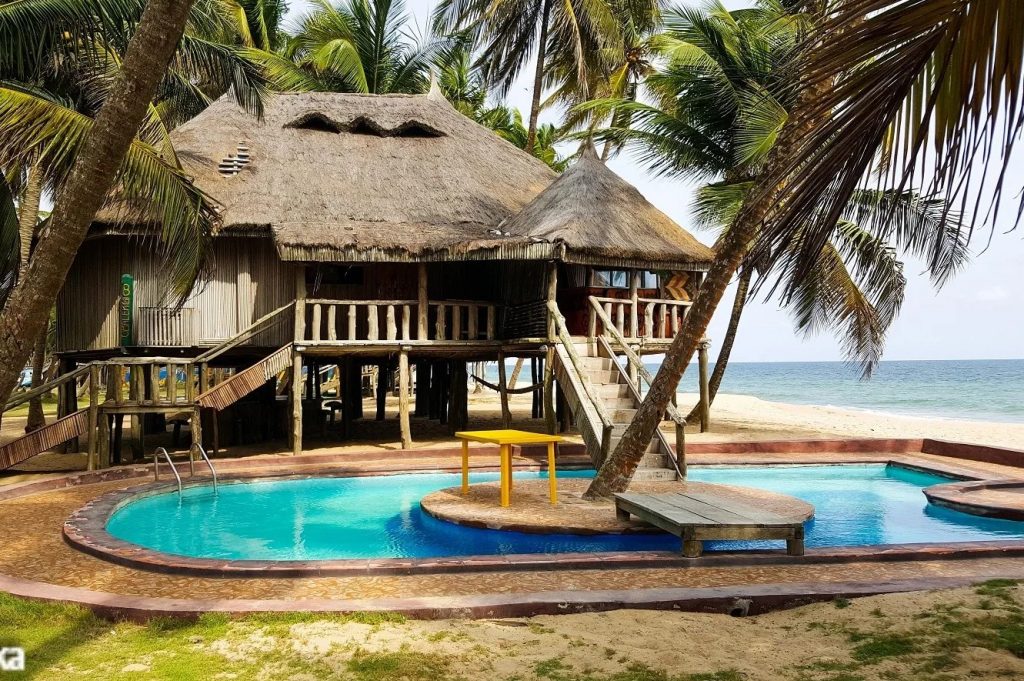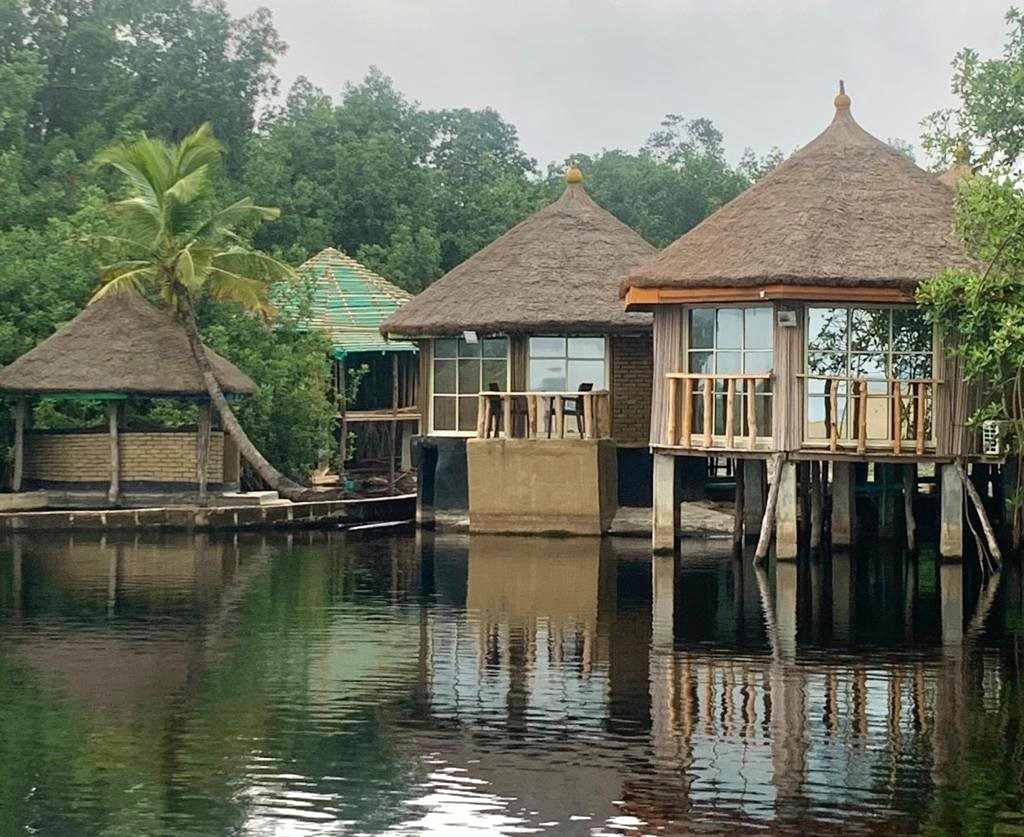Deconstructing Wanle Akinboboye’s 52 Tourism Products
Posted on: March 13, 2024, by : uguru okorie
Otunba Wanle Akinboboye
The La Campagne Tropicana Beach and Forest Resort is arguably one of the most popular indigenous resort brands in Nigeria. Aside from popularity, it is also among the most resilient privately owned resorts in the country. For almost 40 years, the resort, established by Otunba Wanle Akinboboye, has defined African theme beach side leisure experiences in Nigeria, and some countries in Africa and the Caribbean.
For those familiar with the history of private sector resort development in the country, La Campagne Tropicana Resort rubs shoulders with resorts like Whispering Palms, Iworo, Badagry Lagos State; Saam Resort, Ajilete, Ogun State; Abraka Turf Club, Delta State, and few others. While most of these pioneering private resorts have closed or have become a shadow of what they were, to the credit of Akinboboye, his resort is still much more vibrant, active, and still defining the leisure and hospitality experience in Nigeria. This he has achieved, by constantly creating new leisure experiences in the resort. La Campagne Tropicana keeps on reinventing itself, hence the reason for its continuous relevance.
A track record of relevance and engagement in Nigerian tourism industry
With a resort close to 40 years old, and having been part of major tourism moves in the country like the Abuja Carnival, conceptualization and delivery of Mare Festival, and many others, Akinboboye’s track record speaks for itself. In the tourism industry, he walks the talk and has been at the forefront of selling the best of Nigerian cum African theme hospitality offerings to both local and inbound tourists. Probably, there are only a few active private-sector tourism practitioners in Nigeria who have invested money, time, energy, and emotion in the tourism industry as much as Akinboboye. So, when he talks about tourism in Nigeria, the nation ought to pay attention.
Late last year, Akinboboye came up with the idea of unveiling 52 tourism products for Nigeria. These products are to be unveiled over 52 weeks. So far, he has succeeded in unveiling about 22 within the same number of weeks. Unfortunately, there is a kind of indifference by both the public and the private sector practitioners to what Akinboboye is trying to do. Rather than stimulating discussions on the feasibility or otherwise of these products being released, the industry has so far met this novel idea with indifference.
This is rather surprising because presently, there are no deep intellectual discussions on how to move tourism development forward in Nigeria at the national level. We have lived through a period where the minister in charge of tourism, for eight years, moved through the motion of managing tourism in the country and ended up wasting eight years with no achievement.
Most of the tourist sites are in decay due to lack of attention. There has not been any effort by the NTDA to market the country either locally or internationally. There has been little visit by the agency to tourism sites for firsthand information on how to improve the facilities and encourage visits. NTDA, for example, has done ‘virtual tourism’ for seven years and is yet to present its scorecard to the industry, yet billions are expanded annually to fund this agency.
We are in a country where the Nigeria Tourism Development Authority (NTDA) for seven years could not achieve one single thing to move the industry forward and considered the passage of the act setting up the parastatal as an achievement, yet the sector practitioners refused to place it under the microscope.
Currently, there is no single active policy framework for tourism development in the country and yet, the industry players are comfortable with that, because nobody wants to offend those in government.
In 1999, when the Ministry of Culture and Tourism was first created by the administration of Chief Olusegun Obasanjo, there was a clear understanding that Nigeria is well endowed with tourism assets. The question was how could this be harnessed so that the country could benefit from the immense wealth creation tourism attracts to any economy.
Efforts were made in the area of a tourism policy that would guide the development of tourism in Nigeria. This culminated in the collaboration between Nigeria and the United Nations World Tourism Organisation, now UN Tourism to have a master plan.
Since the ill-fated master plan, there have not been any well-thought-out efforts on how to grow Nigeria’s tourism products or improve on those already in existence.
Most tourism products Nigeria has been mouthing in the last 50 years have remained stagnant. Rather than improving, the products are regressing and deteriorating with the wear and tear of the passing years.
It is amid this gloom in the Nigerian tourism industry that Wanle Akinboboye’s 52 Tourism Products ought to be interrogated and see how it can add value to the Nigerian tourism industry. I doubt if all these products will fit into the country’s tourism ecosystem, but the industry should interrogate these products, and see the merit or demerits of the products. For an individual to run a hospitality company for close to 40 years within Nigeria’s hash business environment and make a success of it, deserves to be taken seriously when he presents ideas.
The 52 Tourism Products
Akinboboye, by his ’52 Tourism Products’ is forcing the Nigerian tourism industry to rethink and be more creative in coming out with ideas to sell Nigeria as a destination. Amid despondency and inertia, Akinboboye is heeding the advice of King Odewole to the people of Kutuje in Femi Osofisan’s adaptation of the classical play Oedipus Rex, The Gods Are Not to Blame, that “Not to do something is to be crippled fast’, and ‘to lie down resigned to fate is madness.’ In the era of inaction and the inability of the public sector to galvanize the private sector to grow the tourism industry, Akinboboye is rousing the industry from a self-induced stupor.
A careful analysis of the 22 products so far released by Akinboboye shows an understanding of what the tourism industry needs to ticks in the country, and also a grasp of Nigeria’s source market and the kind of product that could attract inbound tourists.
The 22 Tourism Products released out of the 52 include: 1, Diaspora Nigeria Economic Recovery Programme (DNERP); 2, Youth African Tourism Expedition (YATE) ; 3, Kamp Afrika ; 4, Corporate African Eco Retreat; 5, Business-Bridge to unite the diaspora investors with local SMEs;6, Yoru’Bar: A Restaurant Like No Other; 7, Beach Safari; 8, Tropicana Scuba Diving; 9, ‘HURP’ (Hope Unity Rebirth Prosperity); 10, Motherland beckons, heed the call; 11, It is time to return, Ipada; 12, Ipada Carnival; 13, AIM festival; 14,Ose Awards; 15, Oja Africa; 16, Nefertiti;17, Cosmopolitising Traditional Architecture to Create Tourism Advantage; 18,Atunda Entertainment; 19, Mudhouse; 20, security tour guides; 21, Tourism half hour; 22, World longest pool.
Speaking on why he went into conceptualizing these 52 Tourism Products, Akinboboye said: “This is because we believe the much-neglected tourism sector is the lowest hanging fruit, that should be plucked to quickly reverse the prevailing economic downturn of the nation’s economy, as revenue from tourism goes directly to the people, the taxi drivers, tour guards, souvenirs traders, hotels and so on, whose impact of tourism can be felt directly and almost immediately.”
Deconstructing the mindset of Akinboboye, one could see that in the gamut of products so far, there is an attempt to capture all facets of the industry that could help grow tourism in Nigeria.
The relevance of Akinboboye’s 52 Tourism Product and industry growth
Tourism is not rocket science; it is straight enough for one to understand that tourists do not visit a destination without a catalyst. This could be in the form of write-ups, online postings, or through marketing at international travel fairs to build contacts and connect with other operators to bring in tourists. Nigeria, through the ministry in charge of tourism and NTDA, has for long not undertaken any conscious efforts to market the country as an international or local tourist destination. These agencies of government have been more concerned with other things that had little to do with the growth of the sector.
Understanding the sentiment and behavioral patterns of tourists from different parts of the world is equally critical. Knowing that most European, Arab, and Asian tourists do not visit Nigeria as a preferred destination, Akinboboye, through his 52 Tourism Products, has stimulated a potential source of interface between the Nigerian tourism industry and its source market of the Americas, Caribbean, North and South America where there is the largest population African Diaspora. This he has done with products number 1, DNERP; 2, YATE; 5, Business Bridge to Unite the Diaspora Investors with Local SMEs; 9, HURP; 10, Motherland Beckons; 11, Ipada; 12, Ipada Carnival, and 13, AIM Festival. These are tourism products conceptualized and aimed at establishing contact with Nigeria’s source market, the Diaspora, and creating tourism products that would meet their needs to reconnect with the Motherland, that is Africa.
Currently, in the Nigerian tourism ‘ecosystem’, nobody is talking about strategic plans to understand Nigeria’s source market. Neither is there any plan in place for local tourism. In the industry today, more energy is exacerbated on issues that bother on the protection of personal interests and turf than growing the sector. This has hampered meaningful progress in the industry.
The wider products like YATE, Kamp Afrika, the world’s largest swimming pool, appeal to a certain demographic and market segment, that is the youth. According to the UN Tourism Global Report on the Power of Youth Travel, youths, or Gen Y and Gen Z constitute 23 percent of the international arrivals. Locally, youths are currently playing a major role in the efforts to popularize destinations and tourist sites in Nigeria.
A segment of the market that has become very critical in today’s global tourism industry is bleisure, a term coined by tourism practitioners to capture the market that caters to those businessmen and corporate personnel that combines business with leisure activities. With the DNERP, corporate Africa eco-retreat, and business bridge to unite diaspora investors with local SMEs, this segment of the market is captured.
The other tourism products captured the effervescence that goes with travel and holiday experiences in both Nigeria and Africa at large. Yoru’Bar, Ose Awards, Oja Africa, Nefertiti;17, Cosmopolitising Traditional Architecture to Create Tourism Advantage; 18,Atunda Entertainment; 19, Mudhouse; 20, security tour guides; and 21, and Tourism half hour are all built to create a wonderful tourism experience.
Would all these products be successful? Maybe not, but in making efforts to come out with these 52 Tourism Products, Akinboboye is pointing the way forward for tourism in Nigeria, and Africa.



